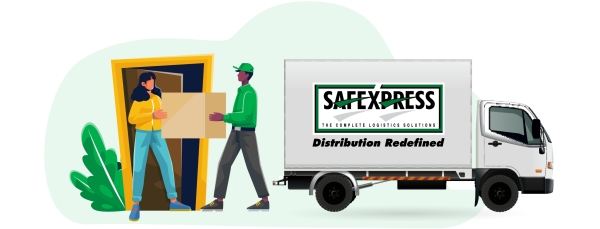Vacant Warehouse: The Magic Component To Thrive In Surface Express Industry!
The most essential thing is to have an empty warehouse because it shows operations are running smoothly, which means the client is satisfied.

Safexpress, India’s largest B2B (business-to-business) surface-express operator, has consolidated its operations to end FY23 with a revenue of INR3,200 crore. Rubal Jain, managing director of Safexpress, spoke recently about the current trends in India’s surface-express industry, which is undergoing significant changes, including improvements in road infrastructure, consolidation, increasing warehouses, adherence to compliance, and the use of large trucks for express operations, as the company prepares to meet the increasing demand for logistics.
Most importantly, Safexpress is increasing storage capacity considerably quicker than in the past, and the credit goes to the entry of a number of small developers and HNIs with land parcels into the industry to build warehouses for the firm.
The few substantial modifications the firm did at the organisation level to address a rise in logistics demand in the previous financial year.
This has been the company’s mentality for the previous 15 years; they anticipate, plan, and construct additional warehouse infrastructure ahead of time. The essential thing is to have an empty warehouse because it shows operations are running smoothly, which means the client is satisfied. That is how one grows. Therefore, they are continually expanding their capacity in making empty warehouses.

The rate of capacity generation has increased dramatically in the recent three years. Three or four major businesses are now developing enormous logistics parks. Five to seven years ago, this was different. However, as a result, an increasing number of small companies or HNIs own property and are willing to invest in constructing a warehouse for a firm like them over the long run — 20 to 30 years. They are aware that Safexpress are not fleeing and that their rent on warehouses will be paid on time.
The warehousing requirements are distinct. The design is unique. Warehouses are not required to store items. It’s like a railway station with things moving all the time. Because of these variables, Safexpress’s warehouse construction speed has increased fivefold in the previous three years. This has allowed them to expand more quickly.
What kind of capacity expansion has the company done in the recent year?
In the last year, Safexpress has added about 1,500 trucks. They’ve opened roughly 10-11 large-format logistics parks of 50,000 square feet or more, followed by numerous delivery centres and expanded several smaller ones.
How has the role of technology altered for Safexpress?
For the firm, technology has played a little different role than expected. Safexpress see technology as a crucial instrument for predicting failure. To trace every package in the system, they are continually improving technology. This is all for internal use only, not for customers.
Customers are generally satisfied when they receive the service they desire continuously. They are the same customers over and over again in B2B. They do not trace every package since it would be necessary for an unreliable environment, not while dealing with a steady service provider. It took the company years to get that degree of dependability. Customers anticipate that Safexpress will deliver on time. If there is a delay, the company will notify them as soon as possible.
Safexpress has been working on technology to digitise things and make better judgements using more data insights on the area of warehouses.

The most significant developments the firm has noticed in the surface-express industry in the previous year.
Compliance is becoming increasingly difficult and expensive for logistics organisations, whether creating e-way bills, generating Part A or B of e-way bills, GST reporting, or income-tax filing. The billing must take place via the GST gateway. Safexpress has made significant investments in conformity with the premise that this is now a way of life. They will have to interface with the government’s IT platform via APIs or manually whenever possible.
Customers are already transitioning from unorganised non-time mobility to timed door-to-door movement. That significant shift is making their business more relevant and scalable. As a result, more clients choose to cooperate with structured logistics players. However, compliance is increasingly complex for many unorganised players, and they desire to operate without these difficulties.
Consolidation is being placed. Several players of all sizes have left the game in the previous four or five years. This has strengthened the position of a few firms in the express industry. However, organised players have a long way to go. At the company’s current level, they account for less than half of the market. However, this does not mean that unorganised gamers will disappear. India is just too huge and diversified a market for a few firms to operate in. It all depends on the ability to continue developing and investing in technology to manage operations. If one is good at compliance, they will have a higher chance of advancement than others.
Safexpress has mostly concentrated on road express. Are there any intentions to expand into multi-modal logistics, rail, and shipping?
The firm says that they have no ambitions to enter the multi-modal logistics market. The rationale for this is that rail and ships are ideal for moving commodities or big products. Safexpress primarily transports items, such as a 20kg cargo, from a factory to an Agra shop. It is not practicable to transport it by railroad network. Furthermore, India’s road network is growing faster than any other network in the world. They are still a long way from finding alternatives to the road. Roads are being developed quickly, making mobility faster and easier. Furthermore, expansion is not becoming an issue for us in road logistics.

Having said that, all of the warehouses are designed to transfer tractor-trailers because the volumes may need the firm to relocate there in ten years. Several other logistics businesses lack the scale that would necessitate huge vehicles. Let’s see whether Safexpress can make a big name in the surface industry sector n the coming years.




